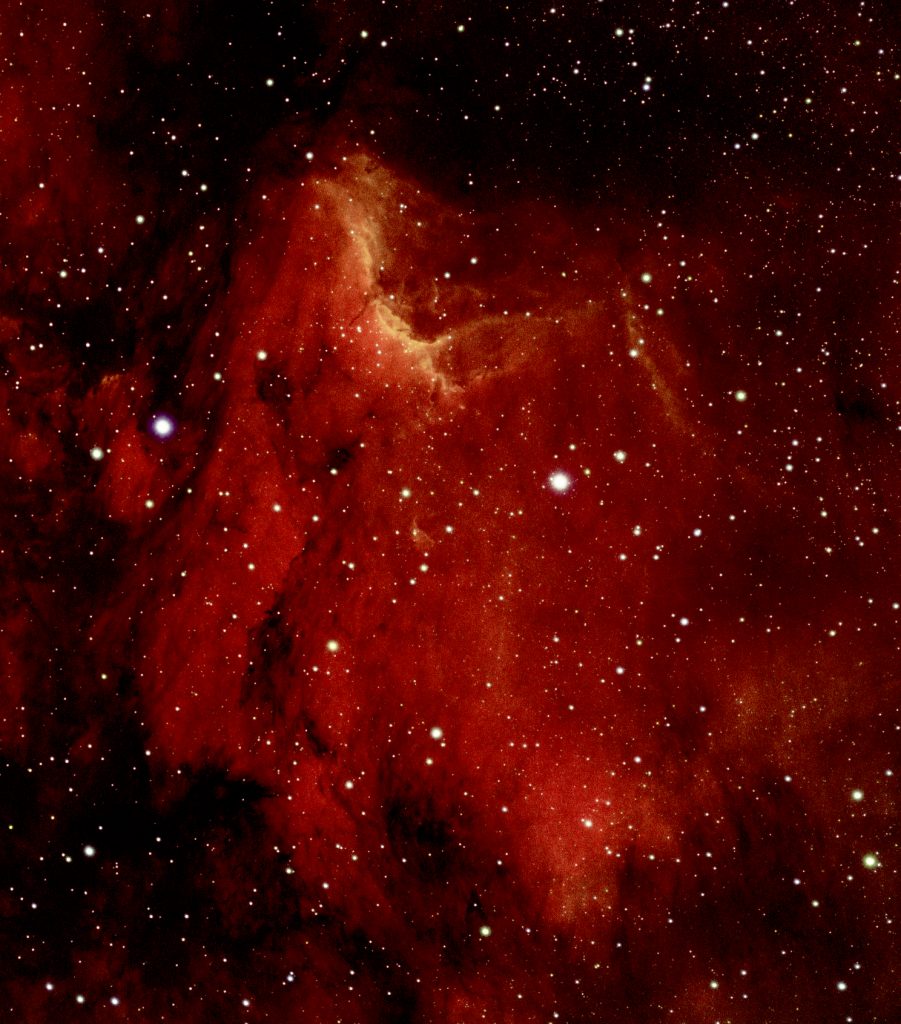
Finally some good weather. Thursday, 6/17/2/21 I had a chance to get out and do some astrophotography. Since I have a relatively small telescope and live in an area with a decent amount of light pollution, I decided the target would be IC5070, the Pelican Nebula. At this time of year Earth is facing away from the center of the galaxy during the night so the targets are limited; mostly consisting of galaxies. Even though the galaxies are massive, the distance from Earth makes them relatively small and without a decent size telescope the images you can produce of them are not too impressive. On top of that light pollution makes them difficult to shoot. Nebulas, on the other hand, emit light at specific frequencies so with a set of filters you can get some decent images of them.
The images were shot using a Zenithstar 73 APO telescope on an HEQ5 Equatorial mount. The camera I used was a ZWO ASI1600MM pro. I took 10 frames each of Hydrogen, Oxygen and Sulfur with an exposure of 450 seconds for each. I also took 10 dark frames at 450 seconds each, 100 bias frames at 0.001 seconds and 20 flat frames for each filter using an automatic exposure which produces a peak at around 32000 on the histogram. The dark, bias and flat frames are used during processing to reduce camera noise and compensate for distortion introduced in the imaging chain. Camera gain was set to 0 (a mistake) and the camera was cooled to -10C.
Processing was done using a combination of PixInsight and Photoshop. I used PixInsight for noise reduction and integration and, since I’m still new to PixInsight, switched over to Photoshop to combine and process the RGB layers.
Highlights from the night included multiple mosquito bites, a set of eyes staring at me at about eye level in the bushes, which I’m assuming was a deer but possibly could have been a bear or my neighbor and a bunny looking up at me from about two feet away.
I also got a chance to check out my new Jackery E500 Power Station. Up until this time I had been running an extension cord out to my setup but since I want to be able to image from different locations I decided to purchase a Jackery. The Jackery is a nicely contained set of lithium batteries, that while expense, is a lot lighter and easier to carry around then a deep cycle car battery.
The Jackery performed flawlessly. At the end of the night, the indicator showed I had only used 25% of it’s capacity. That number was even better than what my calculations had shown. It powered the ASI Air computer, an auto-focuser, the mount, both the main camera and the guiding camera as well as the heater used to prevent dew. I’m very pleased with the purchase.
I was happy with the end result. My processing skills are still lacking but the image came out pretty good considering where I am on the learning curve. Hopefully, we’ll have another clear night soon and I can image some other targets.
